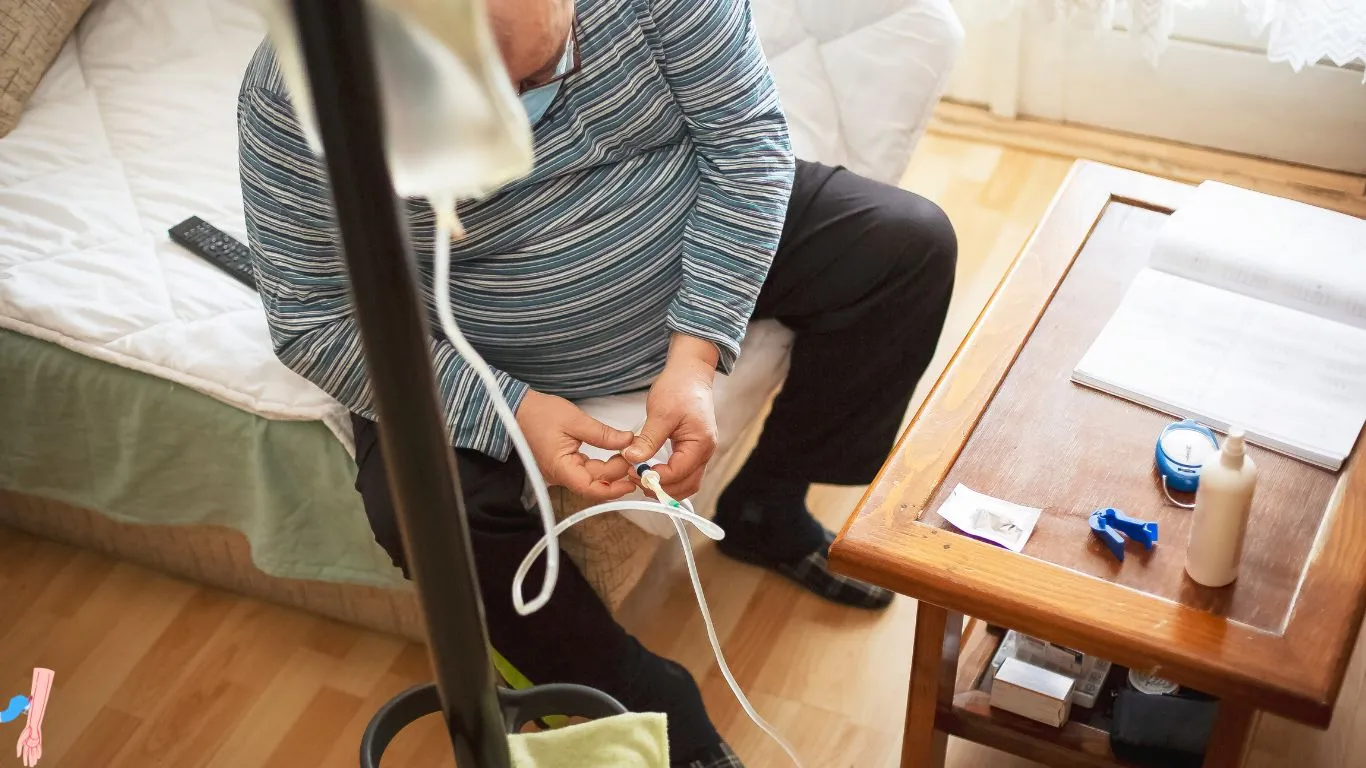
25 Aug Symptoms of Catheter-Related Infection in Kidney Dialysis
There are two types of kidney dialysis that require the use of a catheter to transport blood from the dialysis machine into the body and vice versa. In hemodialysis, a catheter may be installed in the neck, whereas in peritoneal dialysis, the catheter is placed in the abdomen. Dr. Amir Malkawi, a vascular surgery consultant, explains the symptoms of catheter-related infection in the following article.
Symptoms of Catheter-Related Infection in Kidney Dialysis
Catheter-related infection during kidney dialysis is a common problem and its symptoms may include:
Symptoms of Neck Catheter Infection (Hemodialysis Catheter)
Immediate medical consultation is required if any signs of hemodialysis catheter-related infection appear, which may include:
- General feeling of tiredness and fatigue.
- Elevated body temperature or fever.
- Purulent drainage from the catheter insertion site through the skin.
- Chills or body shivering.
- Pain upon touching the area surrounding the catheter.
- Redness around the catheter site.
Read More: The Carotid artery disease and strokes
Symptoms of Abdominal Catheter Infection (Peritoneal Dialysis)
If any symptoms suggesting catheter infection arise, prompt emergency medical attention is necessary. These symptoms may include:
- Abdominal pain.
- Loss of appetite.
- Nausea and vomiting.
- Pain upon palpation of the abdomen.
- Noticeable abdominal swelling.
- Elevated body temperature.
- Decreased frequency of urination.
- Inability to defecate or pass gas.
- Mental confusion.
- Feeling of tiredness and fatigue.
- Diarrhea.
- Excessive thirst.
- Change in skin color around the catheter insertion site.
- Foul-smelling discharge from the catheter insertion site in the abdomen.
- Cloudy peritoneal fluid during dialysis.
- Noticing spots or white lines in the peritoneal fluid during dialysis.
Tips for Caring for Kidney Dialysis Catheter
There are several tips provided by Dr. Amir Malkawi aimed at caring for a kidney dialysis catheter, minimizing the risk of infection, or speeding up recovery after diagnosing catheter-related infection. These tips include:
- Ensure to gather sufficient information about your health issue, expected treatment duration, or anticipated catheter placement duration.
- Attend scheduled appointments for dialysis sessions or follow-up visits to ensure the catheter’s safety.
- Maintain cleanliness and dryness around the catheter insertion site and the surrounding skin area. Check daily for any signs indicating infection.
- Wash hands thoroughly before touching the catheter.
- Consult the doctor regarding appropriate bathing times and specific bathing instructions.
- Avoid using bath tubs or swimming in public pools or the sea during catheter placement periods.
- Refrain from manipulating the catheter at home to avoid air entry or contamination.
- Wear a mask covering the mouth and nose whenever the catheter is accessed at home or in the hospital.
- Adhere to taking prescribed medications and antibiotics as directed by the doctor if diagnosed with catheter infection. Do not stop taking medications until completing the full course of treatment as prescribed.
Finally, it’s important to note that the competence and experience of the medical team play a role in skillfully placing the catheter, reducing the risk of infection, and treating infections correctly if they occur. Therefore, do not hesitate to visit Dr. Amir Malkawi’s clinic for consultation and necessary actions.
References:
[1] – https://www.verywellhealth.com/everything-you-wanted-to-know-about-dialysis-2085855
[2] – https://www.mayoclinic.org/diseases-conditions/peritonitis/symptoms-causes/syc-20376247
[3] – https://www.kidney.org/atoz/content/peritonitis
[4] – https://www.kidney.org/atoz/content/hemocatheter
[5] – https://www.kidney.org/atoz/content/hemocatheter
[6]-https://myhealth.alberta.ca/Health/aftercareinformation/pages/conditions.aspx?hwid=abr7195#abt1411
[6] – https://www.azuravascularcare.com/infodialysisaccess/types-of-dialysis-access/
